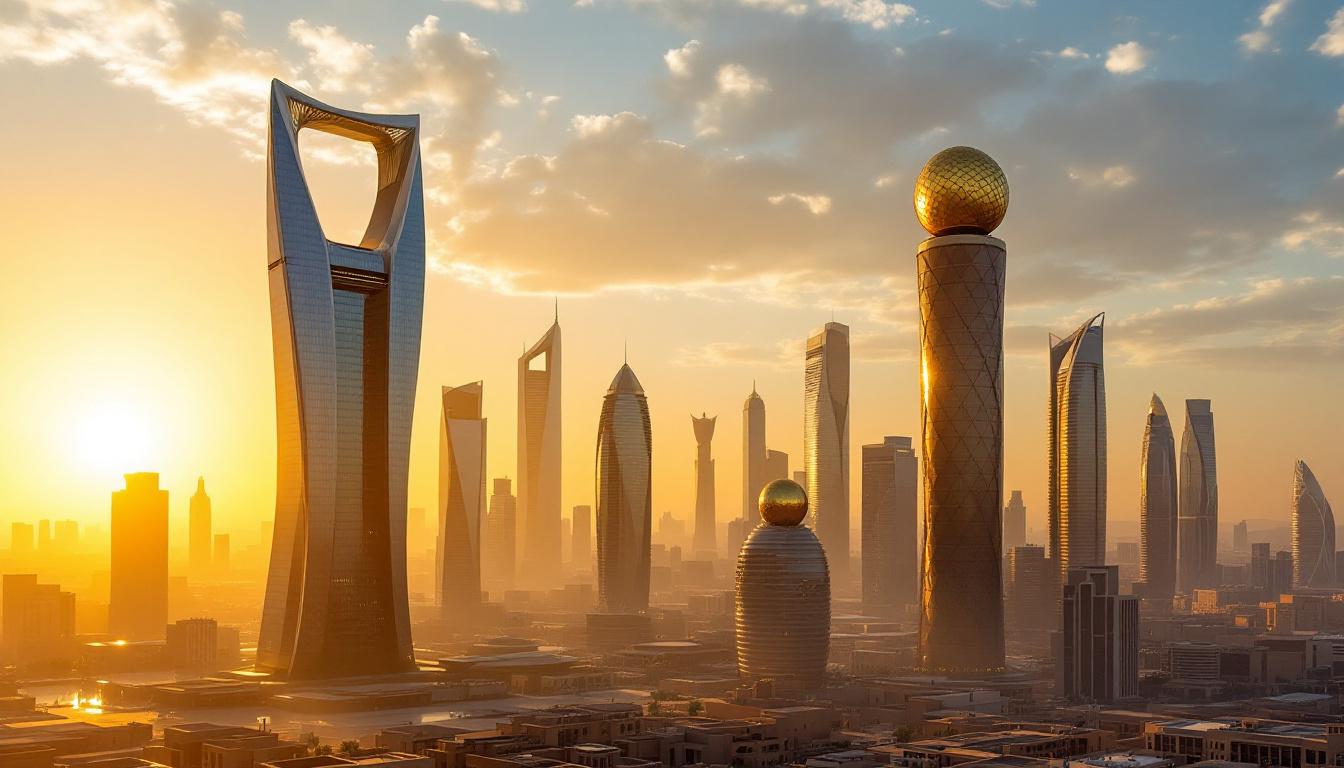Riyadh: Where Skyscrapers Rise from Ancient Sands
The desert metropolis transforming at lightning speed
Standing at the Kingdom Centre’s 99th-floor Sky Bridge, Riyadh unfolds below like a mirage made permanent. The capital of Saudi Arabia presents one of the world’s most dramatic urban contrasts—ultramodern skyscrapers jutting from an ancient desert plateau, creating a cityscape unlike any other on earth.
“Our city represents the future while honoring our past,” explains Mohammed Al-Faisal, a local architect. “The transformation happening now is unprecedented in our history, yet we’re determined to maintain our cultural identity through it all.”
A city built on oil and ambition
Just 60 years ago, Riyadh was little more than a modest desert settlement. Today, it’s a sprawling metropolis of 7.5 million people, fueled by petroleum wealth and ambitious development plans. The city serves as the showcase for Saudi Arabia’s Vision 2030 initiative, which aims to diversify the economy beyond oil.
This rapid growth has created architectural wonders like the 302-meter Kingdom Centre with its distinctive inverted arch top and the Al Faisaliah Tower with its golden geodesic sphere, both defining landmarks on the desert skyline.
Where ancient fortresses meet futuristic metros
The 19th-century Al Masmak Fortress stands as a mud-brick testament to Riyadh’s origins. Its thick walls and desert-colored ramparts tell the story of the Kingdom’s founding, offering a stark contrast to the city’s futuristic metro stations designed by Zaha Hadid Architects.
The KAFD and Qasr al-Hokm stations represent some of the most avant-garde public transit architecture globally, with flowing forms inspired by desert dunes and traditional Bedouin tents reimagined in steel and glass.
Edge of the World: The desert’s dramatic finale
Just 90 kilometers from downtown rises Jebel Fihrayn, locally known as Edge of the World. This dramatic escarpment drops 300 meters to the desert floor, creating panoramic vistas that stretch seemingly to infinity. The geological formation is part of the Tuwaiq Escarpment, formed millions of years ago when this area was underwater.
The best time to visit is between October and March when temperatures are moderate. Many travelers compare the experience to visiting America’s Grand Canyon, but without the crowds you’d find at similar natural wonders.
Diriyah: The birthplace of modern Saudi Arabia
The UNESCO World Heritage Site of Diriyah (At-Turaif) represents Saudi Arabia’s original capital. Its mud-brick structures and narrow alleyways transport visitors to the 18th century when the first Saudi state was established.
The district’s ongoing restoration showcases traditional Najdi architecture with its distinctive triangular roofline decorations and thick walls designed to withstand desert heat. Similar to historic preservation efforts in Mediterranean communities, Diriyah balances authenticity with accessibility.
An unexpected oasis in the city’s heart
Wadi Hanifa provides Riyadh with a surprising green corridor cutting through the urban landscape. This rehabilitated valley features walking paths, picnic areas, and water features that create a lush microclimate in stark contrast to the surrounding desert.
“The wadi shows our commitment to creating livable spaces within our harsh environment,” notes environmental planner Nora Al-Shaikh. “It’s a place where families gather in the evenings, much like hidden urban retreats in other global cities.”
Cultural awakening in the desert kingdom
Riyadh’s cultural scene is flourishing with new galleries, museums, and performance spaces. The annual Riyadh Season festival (October-March) brings global entertainment to the city, featuring concerts, sporting events, and cultural exhibitions that would have been unimaginable just a few years ago.
The King Abdulaziz Historical Center houses the National Museum, offering eight galleries that trace Arabian history from prehistoric times through the Islamic era and into modern Saudi statehood.
Desert adventures beyond the skyline
Beyond city limits, the desert offers adventures from dune bashing in 4×4 vehicles to camel rides and overnight camping beneath brilliant stars. Unlike tropical getaways with consistent weather patterns, Riyadh’s desert experiences vary dramatically by season.
The red sands of the Nafud Desert create otherworldly landscapes perfect for photography, especially during golden hour when the dunes take on a fiery glow against deepening blue skies.
A culinary scene bridging tradition and innovation
Traditional Saudi cuisine can be sampled at restaurants like Najd Village, where diners sit on floor cushions and enjoy communal plates of kabsa (spiced rice with meat) and jareesh (crushed wheat with meat). Meanwhile, international dining options have exploded across the city, with celebrity chefs opening outposts alongside local entrepreneurs.
The contrast between ancient and modern extends to Riyadh’s markets, from the traditional Souq Al Zal with its spices and handicrafts to gleaming luxury malls like Kingdom Centre and Al Faisaliah.
Riyadh represents the Middle East’s most dramatic experiment in rapid modernization while maintaining cultural identity. For travelers seeking experiences beyond typical tourist destinations, similar to discovering lesser-known Mediterranean islands, Saudi Arabia’s capital offers a fascinating glimpse of a society in transformation.
